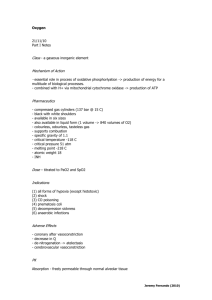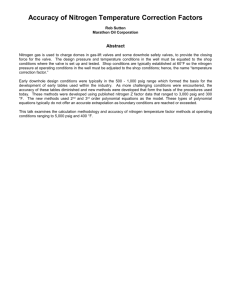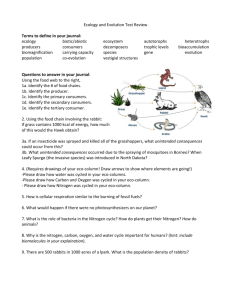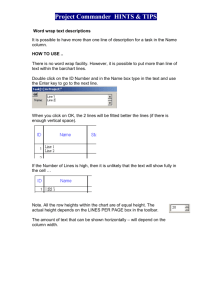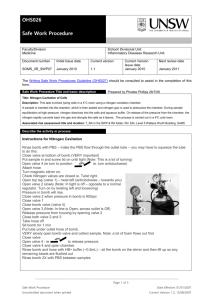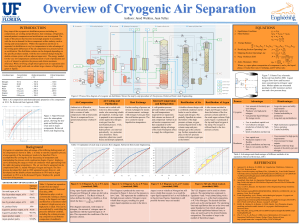Oxygen Manufacturing Process
advertisement
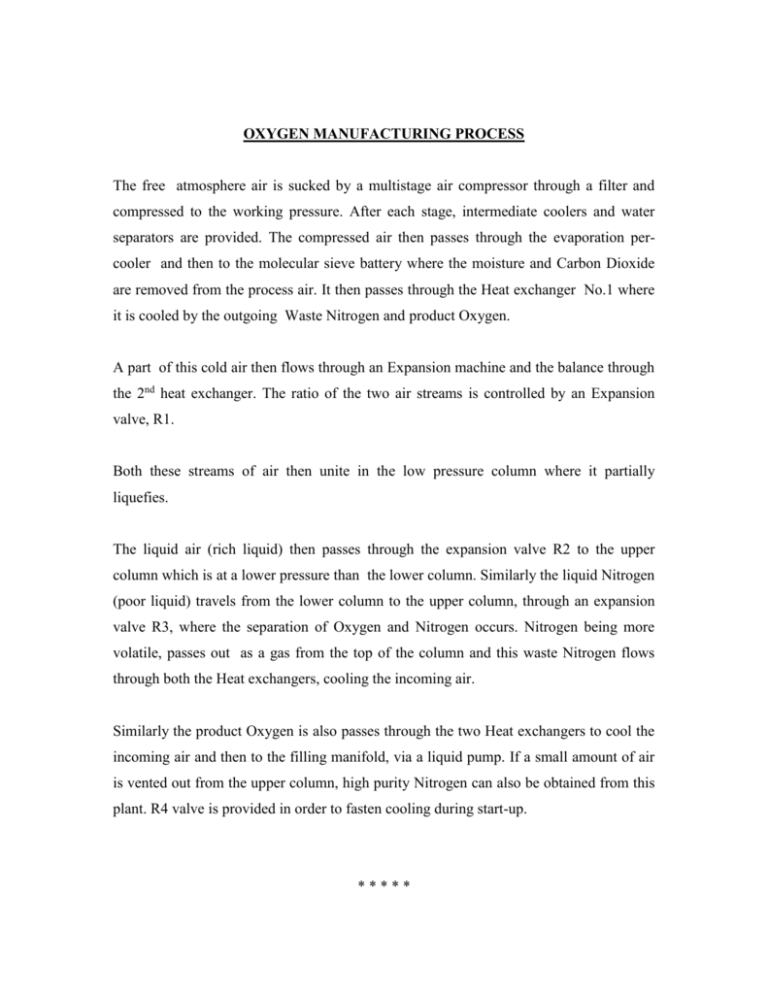
OXYGEN MANUFACTURING PROCESS The free atmosphere air is sucked by a multistage air compressor through a filter and compressed to the working pressure. After each stage, intermediate coolers and water separators are provided. The compressed air then passes through the evaporation percooler and then to the molecular sieve battery where the moisture and Carbon Dioxide are removed from the process air. It then passes through the Heat exchanger No.1 where it is cooled by the outgoing Waste Nitrogen and product Oxygen. A part of this cold air then flows through an Expansion machine and the balance through the 2nd heat exchanger. The ratio of the two air streams is controlled by an Expansion valve, R1. Both these streams of air then unite in the low pressure column where it partially liquefies. The liquid air (rich liquid) then passes through the expansion valve R2 to the upper column which is at a lower pressure than the lower column. Similarly the liquid Nitrogen (poor liquid) travels from the lower column to the upper column, through an expansion valve R3, where the separation of Oxygen and Nitrogen occurs. Nitrogen being more volatile, passes out as a gas from the top of the column and this waste Nitrogen flows through both the Heat exchangers, cooling the incoming air. Similarly the product Oxygen is also passes through the two Heat exchangers to cool the incoming air and then to the filling manifold, via a liquid pump. If a small amount of air is vented out from the upper column, high purity Nitrogen can also be obtained from this plant. R4 valve is provided in order to fasten cooling during start-up. *****
